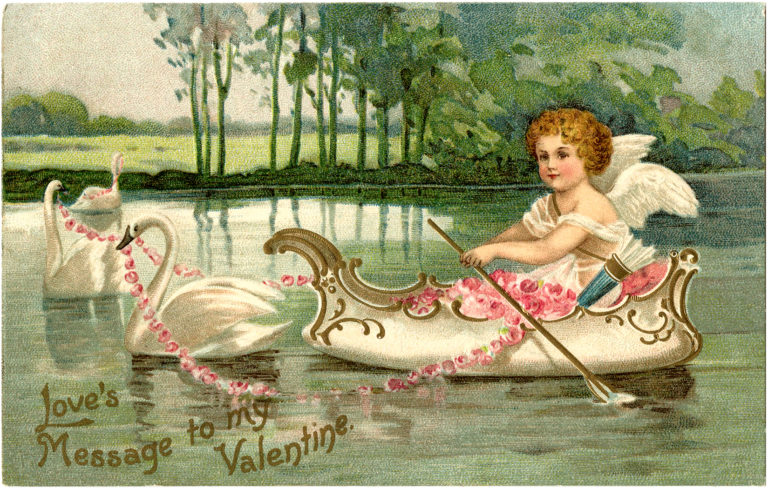Cupid, the Creepy Love Baby
Cupid, the unofficial mascot of Valentine’s Day, has quite a long surprising history
Image from https://thegraphicsfairy.com/valentine-cupid-images/
The image of Cupid as an angelic baby that is popular today is not the way that Cupid was seen in ancient times.
Cupid, a symbol of loving happiness. A cherished cherub whose likeness adorns homes and businesses every Valentine’s Day, spreading smiles, hopes of true love, and inspiring millions to spend freely on their romantic interests, gifting chocolates, flowers, and jewelry.
On the surface, it all seems innocent, but if you peel back the layers of history, things start to take peculiar shapes that aren’t so innocent. Let’s take a deeper look at this misunderstood holiday and its poster child, Cupid.
Valentine’s Day has its roots in the Roman holiday Lupercalia which honored the mythical wolf that saved the founders of Rome, Romulus and Remus.
As tradition went in early Rome, it was customary to sacrifice and skin three goats and a dog for Lupercalia. Then the celebratory mass would feast on them. The skin was then cut into whips and women would be failed with them by minimally dressed men. As time passed people wore more clothes and the whipping became voluntary.
Eventually, Pope Gelasius ordered for Lupercalia not to be celebrated as it was a “Pagan” custom and therefore sinful. A large portion of the population felt slighted and their own cultures’ and history discarded. So the Pagan holiday was renamed and rebranded to honor Saint Valentine and focused on love. This appeased the populace and made it easier for the Vatican to thread itself into the diverse Pagan cultures.
Cupid also has a unique history and origins in Greek mythology.
It starts with the king of the gods, Zeus, whose daughter Aphrodite was the most beautiful being in Olympus. She was titled the Goddess of Love. No man could not look upon her and not fall in the deepest of desires of love. Even the gods, including her own father Zeus, could not escape her gaze. Through the taboo actions of father and daughter, Aphrodite gave birth to her son and half brother, Cupid.
Cupid had a human girlfriend named Psyche, who challenged his mother’s beauty (or was it his sister’s?), so Aphrodite assassinated her out of jealousy. Yet, when Psyche died she ascended to become a goddess, and with Cupid, had a daughter named Edone.
Edone became the muse of passion and love and joined the other muses who were born from Zeus and his aunt Mnemosyne. Thus, Cupid’s daughter is his aunt.
In modern times, Cupid is a cherub commonly depicted as a fat baby with small wings dressed in a cloth diaper and a quiver full of heart tipped arrows. This is the western interpretation and depiction of cherubims. The classical Eastern European and Western Asian depiction is a bit more off-putting.
Ezekiel 10 of the King James Bible described them as having four different heads: one of an ox, an eagle, a lion, and a man. They possessed four separate pairs of wings and the cherub’s body was completely covered in hundreds of eyeballs. The cherubim were positioned inside four spinning wheels. The wheels also were also covered in eyes and flame. These provided both protection and permitting the cherubim to see everything from multiple points of view.
Finally, there is the well-known habit of Cupid flying about, shooting arrows with magical tips to cause couples to fall in love. When people fall in love it is said to be destiny, but it is just as easily a cherub being mischievous.

Salutations, my name is Steven and I'm a sophomore Eagle Eye staff member. I hope to give to you fun and interesting articles for this 2019-20 school year....













